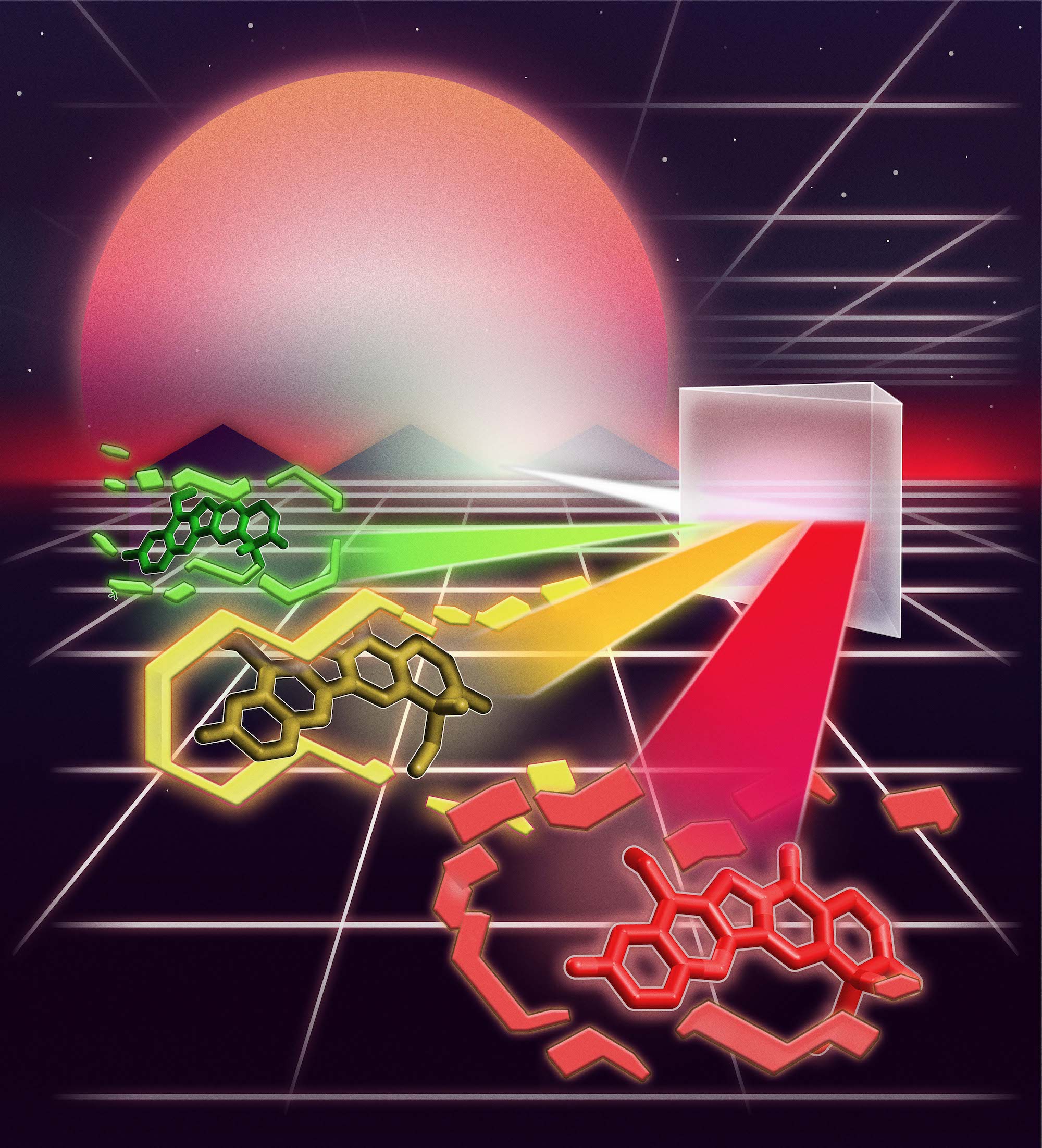Photocages are light-sensitive chemical protecting groups used to temporarily inactivate bioactive molecules, such as drugs or neurotransmitters, by "caging" them. Upon exposure to specific wavelengths of light, the photocage is removed, releasing the active molecule in a precise, spatiotemporally controlled manner. Photocages can be used for targeted drug delivery (using light as a guide) or in chemical biology studies where the precise "dosing" of a certain substance is needed.
This research project aims to expand the current palette of photoactivatable materials by developing advanced photocages or photoremovable protecting groups (PPGs) tailored for chemical biology and targeted drug delivery applications. We are conducting a systematic investigation into the synthesis, electronic tuning, photochemical properties, and biocompatibility of our recently introduced xanthenium-based PPG family. A key focus is on optimizing these PPGs to operate efficiently under near-infrared wavelengths, enabling deeper tissue penetration and minimal photodamage. This work has the potential to revolutionize photoactivatable technologies and open new avenues for precision control in biological and therapeutic systems.


Chemotherapeutics often suffer from unwanted toxicity that limits their effective use. Most of cancer-specific targeting approaches are controlled by the biological properties of the tumor, which are often non-consistent resulting in diminished activities and side-effects. External control over the site-selective activation of a drug is highly desired especially in case of non-operable solid tumors. Low energy red light, which is already applied in photodynamic therapy (PDT) would be great as an externally controllable trigger as it has an increased penetration depth and can be used with optical fibers to even reach internal organs. Because PDT has limited use, another approach emerged recently: ‘photoactivated chemotherapy’, or PACT. Here a drug is connected to a photocage, which reduces its activity. Light irradiation triggers the release of the drug, restoring its activity at the site of irradiation. In order for PACT to reach clinical translation, however, more advanced photocages are required. Our research group has recently developed a set of red light sensitive PPGs as a novel toolbox for PACT, however, further studies are required for them to truly make an impact.
Within this project, we focus on the translation of PACT to the clinics. While this might still be far away, based on this long-term goal we are developing advanced photocages and their drug conjugates capable of operating efficiently in the red or near-infrared region. By designing xanthenium-based photocages that are water-soluble and capable of deep tissue activation, we address critical challenges in drug delivery, such as minimizing off-target effects and achieving precise spatiotemporal control over drug release.
Bioorthogonal chemistry is defined as chemical reactions that occur rapidly and selectively within living systems without interfering with native processes. These reactions are highly specific, biocompatible, and work under physiological conditions. They were first used for labeling biomolecules, but recently these reactions became a powerful tool in diverse applications, such as imaging, drug delivery, and therapeutic development. It is fair to say that this field has revolutionized the study and manipulation of biological systems, offering unprecedented control and specificity in both basic research and clinical applications.
Combination of light activation with bioorthogonal chemistry has significantly advanced the precision of phototherapeutic interventions. This combination allows for the selective activation of therapeutic agents in specific tissues, minimizing off-target effects. Within this project, we design and synthesize so far unprecedented, multi-functional systems capable of delivering biologically active molecules to a specific location, where they can be activated or released using external light stimulus. This concept is based on bioorthogonally functionalized photoremovable protecting groups (PPGs or photocages) that become photoresponsive solely upon a specific chemical reaction. This novel concept, termed “conditional photoactivation” requires the chemical modification of photocages with a bioorthogonal functionality that quenches photoactivity until it is transformed in a bioorthogonal ligation reaction. The results of this project were expected to give tools for chemical biologists for light-assisted manipulation of biological systems with unprecedented precision as well as propose a novel approach in light-controlled drug delivery.